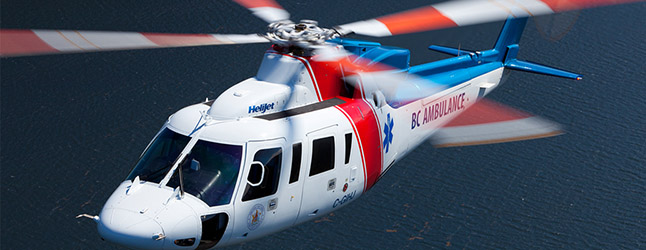
By David F. Rooney
A lot of people know Bill Zmaeff. Bill’s a friendly former railroader who has been in Revelstoke with his wife Judy since 1995. Like many people who face personal medical emergencies he didn’t see it coming.
“it was just a normal morning I was up at quarter to seven… I was having porridge for breakfast when I started feeling a pain in my chest,” he said. “It didn’t want to go away so we went to Emergency but the pain began getting worse.”
That was no surprise because Bill was diagnosed with a heart attack.
Bill’s a big man and he felt absolutely helpless as Dr. Cam Molder and the nurses worked to save him. Eventually he heard him say it was time to summon a helicopter.
Not long afterwards a chopper arrived to shuttle him off to Kelowna General Hospital where doctors inserted a stent — a flexible tube — into his chest to ease the blockage.
“It seems to me that there are a lot of people who are a lot worse than me,” he said.
Bill’s experience is not unique.
Last year, Angus Woodman displaced his pelvis and broke his left femur during a skiing accident at RMR. He was taken first to the base of the resort, then bundled into an ambulance for the trip to QVH, where he was examined and then sent back to the airport for a helicopter trip to Kamloops. Then from there he was sent by aircraft to Vancouver General Hospital where a team was assembled to deal with his pelvis.
All of that movement from one location to another seems like wasted movement and when he talks about it Angus describes it has “being packaged and then re-packaged every step of the way.”
If there had been a helipad at QVH his transport would have been a lot simpler as he would not have had to be “packaged” to go to the airport here in Revelstoke where he was repackaged for the helicopter flight to Kamloops. If QVH had a dedicated helipad, he could have simply just gone directly to Royal Inland Hospital in Kamloops saving paramedics valuable time.
“The last time a helicopter came to QVH and landed in the visitor car park was most likely the Boulder Mountain Avalanche back in March 2010 when some of the heliski operators brought the most critical injured directly to the hospital from the scene and landed in the visitor car park,” says QVH administrator Julie Lowes.
That incident claimed two lives and left 31 injured.
“The remaining injured were triaged at the airport and then brought to hospital by ambulance, she said.
And it doesn’t stop there. Helicopters are called upon to lift injured forestry workers and travelers on the highway to safety. And, it doesn’t stop there! In terms of number of patients that have gone out via the airport the figures are:
- 2015 calendar year — 15
- 2014 calendar year — 13
Every year, people are evacuated to and from QVH for critical emergency treatment and their successful recovery from the trauma they are suffering could be improved by the faster transfer times that will only be possible if helicopters can land at the hospital.
Recognizing that, the Revelstoke District Health Foundation has unveiled a plan to build a helipad that meets Transport Canada regulations that can be the difference between Life and Death for those with general medical emergencies, the victims of serious mountain or water adventure accidents, industrial accidents and highway accidents.
The pad comes with a hefty price tag — $465,000 that the foundation has to raise for the construction of the helipad because while Interior Health will pay to upgrade an existing and approved helipad it won’t finance a new one. Once constructed, Interior Health will cover ongoing annual operating costs.
Dr. Cam Molder has long advocated for a helipad at QVH and says it’s “absolutely worth every penny” but this vital facility will not get built without community support.
Your financial support for this vital project is crucial. You, your family, neighbours and friends may all benefit from this addition to our community hospital.



